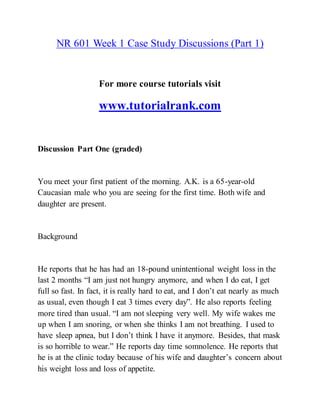This document consists of a series of case studies discussing the medical histories, symptoms, and physical examinations of several elderly patients. It includes detailed information on their past medical history, medications, social history, and differential diagnoses. The discussions also require the formulation of treatment plans and the selection of appropriate geriatric assessment tools.
















































